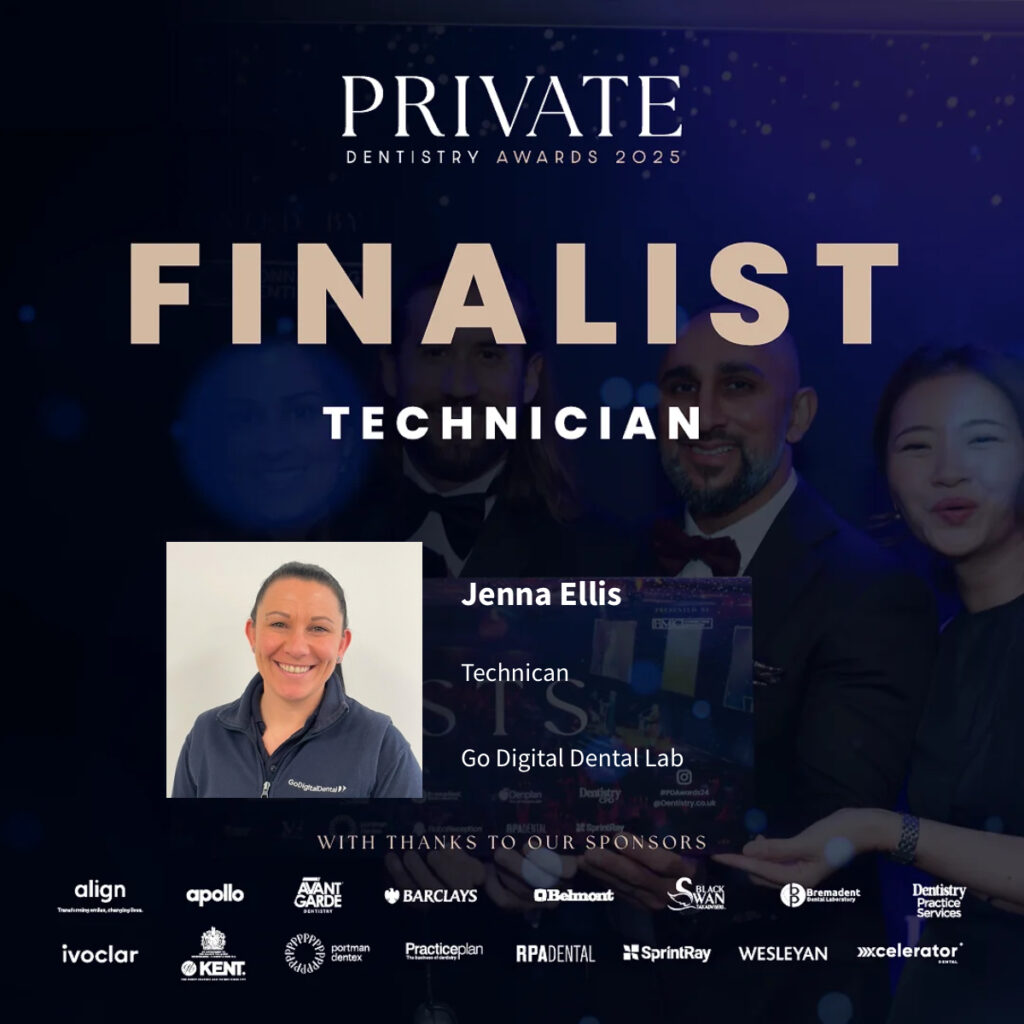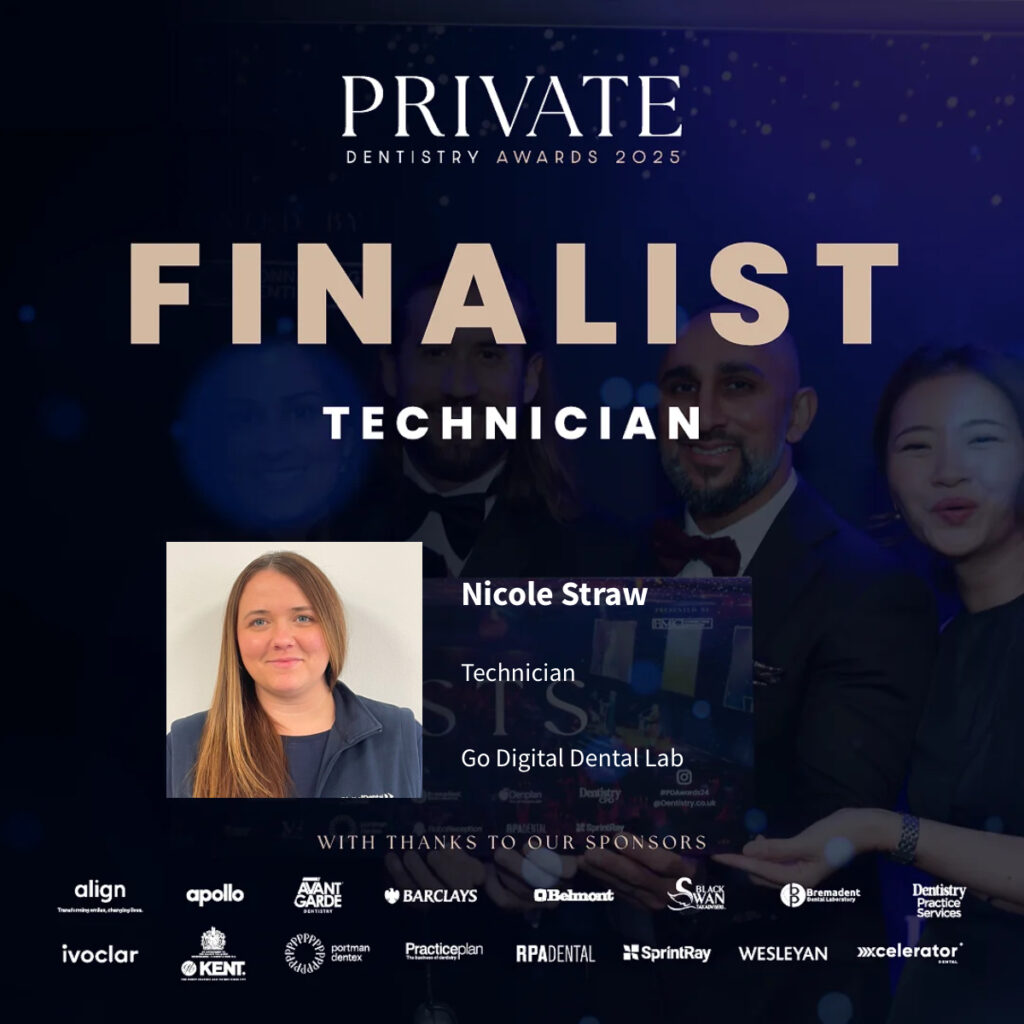Dental crown lab and bridge restorations: strong, natural-looking restorations tailored to your practice
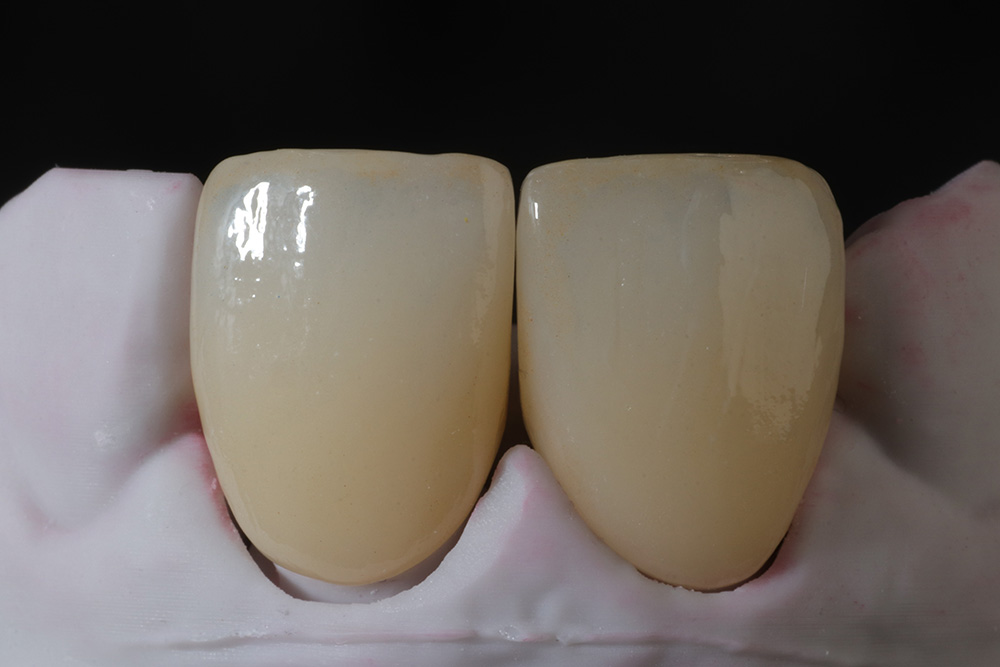
Advanced materials for strong, natural crown and bridge restorations
There are a plethora of ceramic materials to choose from in order to achieve the most natural appearance for restorations. These range from a full-contour monolithic solution to a more traditionally layered crown or bridge.
The material of choice for many clinicians is a monolithic material, such as a high-strength zirconia or a lithium disilicate.
Flexible solutions for every crown and bridge case
Why choose GoDigital Dental for crowns and bridges?
From single units to full-arch bridgework, our crown and bridge restorations are crafted to the highest standards.
Utilising advanced digital workflows and meticulously tailored designs, our dental crown lab delivers restorations that combine exceptional precision with aesthetic excellence. With GoDigital Dental, you can trust in seamless results that meet the most discerning clinical and cosmetic expectations.
Precise planning
Using advanced digital technology, we carefully plan and design restorations with exceptional accuracy, significantly reducing the risk of errors and ensuring the best possible outcome for your patients.
Efficient digital workflow
Our fully digital workflow, including intraoral scanning, ensures outstanding precision, enhances patient comfort, and streamlines clinical procedures, making your practice more efficient and improving overall treatment outcomes.
Collaborative approach
We maintain a close working relationship with you, providing expert guidance to determine the most suitable treatment options for your patients, ensuring a smooth, predictable, and successful restoration process.
Flexible options
From minimal-prep to full-coverage crowns and complex multi-unit bridges, we deliver precision-engineered results using the latest materials and techniques, including custom shading, layered ceramics, and tailored occlusal schemes.
Zirconia for modern dentistry
Monolithic zirconia
Zirconia was traditionally used for strength as an alternative to metal. Over the years, this material has only increased in strength, allowing us to utilise it for full-arch implant cases. It has also vastly improved in terms of its aesthetic potential. At GoDigital Dental, we use the very best zirconia we can source, giving our dentists the best of both worlds for crowns and bridges. We have seen quite a shift from a more traditionally layered crown or bridge towards using a fully monolithic zirconia to achieve a particular result in terms of aesthetics. The development of zirconia has seen it go from a pure white block to a multilayered monolithic block with high translucencies and durability, enabling us to meet the high demands for appearance that are so often associated with cosmetic cases.
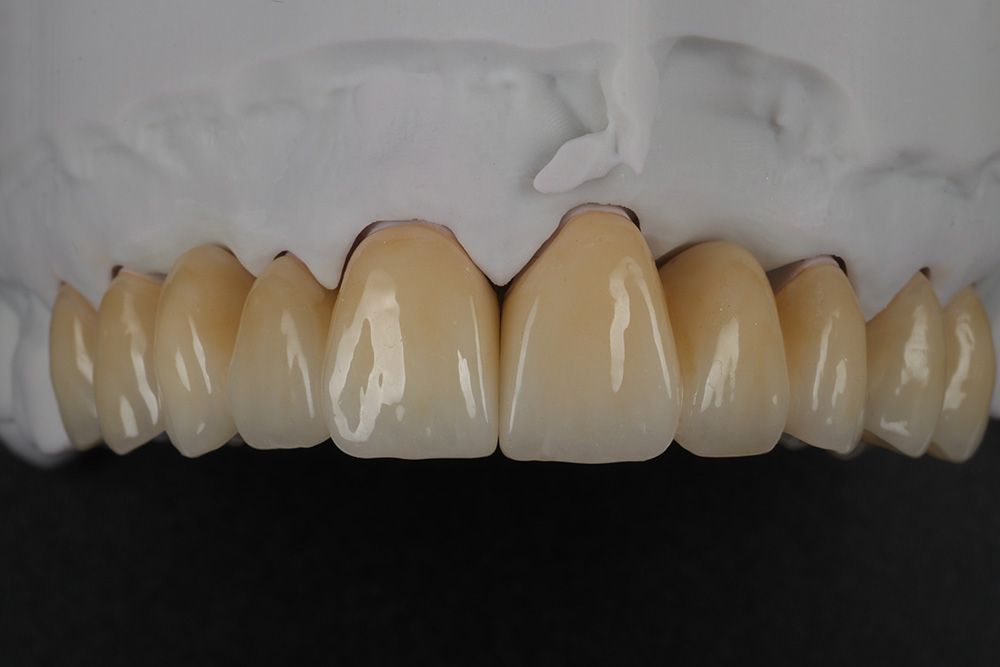
Advanced ceramics for crown and bridge restorations
Lithium disilicate
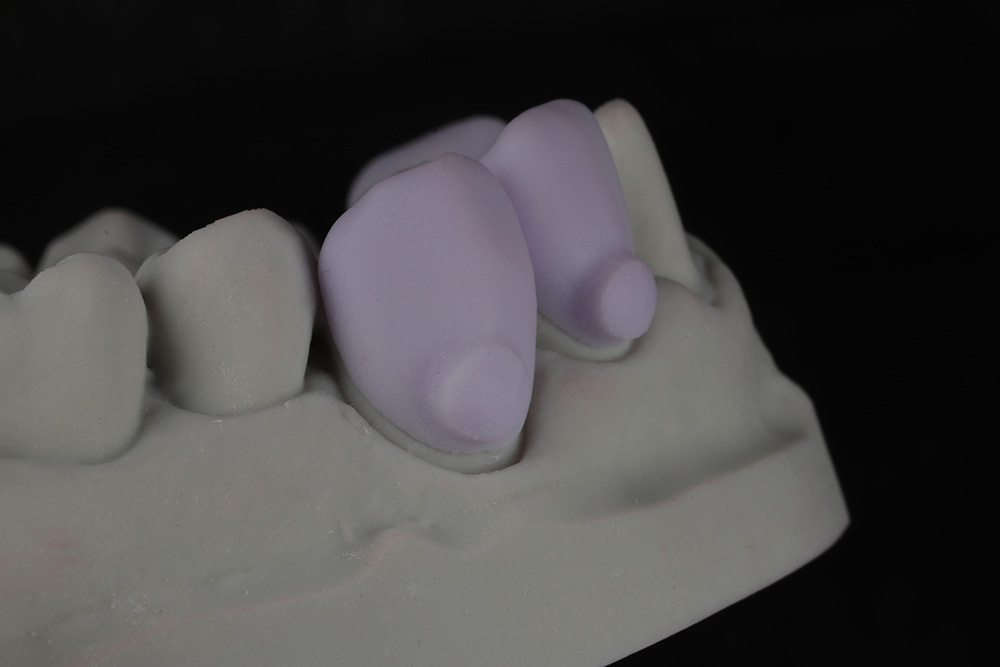
Lithium disilicate (or Ivoclar emax) is widely used for those hyper-sensitive cosmetic cases. With its translucency and strength, this material can provide beautiful results for veneer cases, inlays and onlays, as well as posterior work. The beauty of lithium disilicate is that, as a dental laboratory, we can control the opacity of the material. The CAM block selection ranges from HO (high opacity) to HT (high translucency), which helps us in block selection for more challenging cases. With the aid of online tools to select the correct block shade, we can communicate effectively with the clinician to help them envision the final result.
Translucent ceramics for a natural finish
Feldspar ceramics
Feldspar ceramics are a great way of achieving a more natural finish in cases where appearance is a priority, thanks to their excellent translucencies and natural, tooth-like appearance. These materials are mainly glass-based, making them aesthetically pleasing, but relatively lower in strength compared to other dental ceramics.
They can be used in layered restorations where they are fused to a stronger core (such as zirconia or metal) to enhance durability while maintaining aesthetic qualities. Due to their brittleness, they are less suitable for high-stress areas, but could be worth considering as an option for veneer cases. If you’re unsure whether Feldspar ceramics are a good fit for a particular case, this is something we are more than happy to discuss with you and your team to help you make an informed decision.
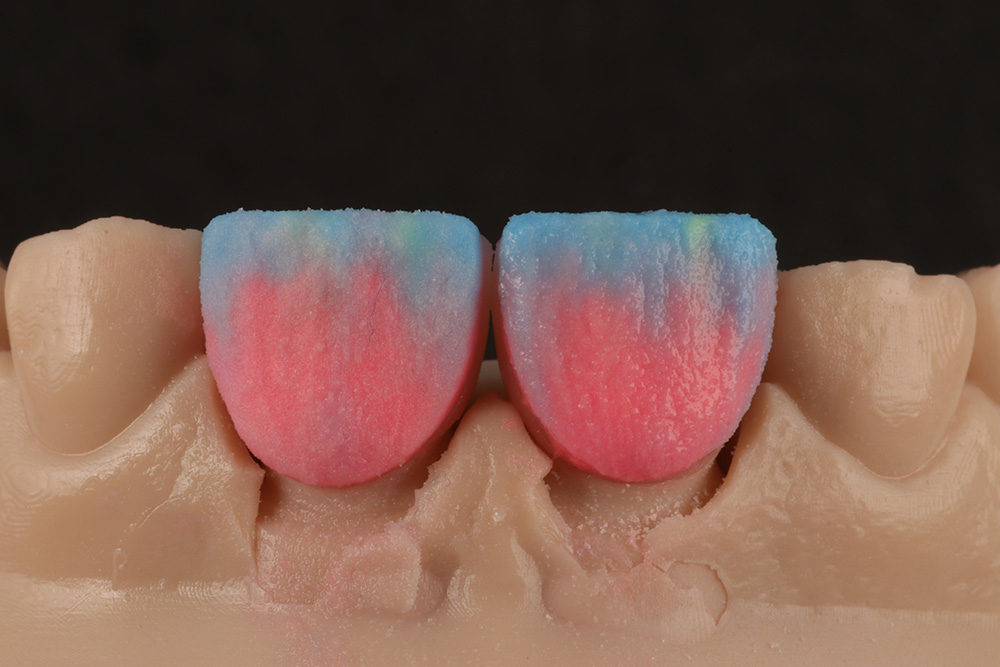
High-performance hybrid for crown and bridge work
Hybrid dental ceramics
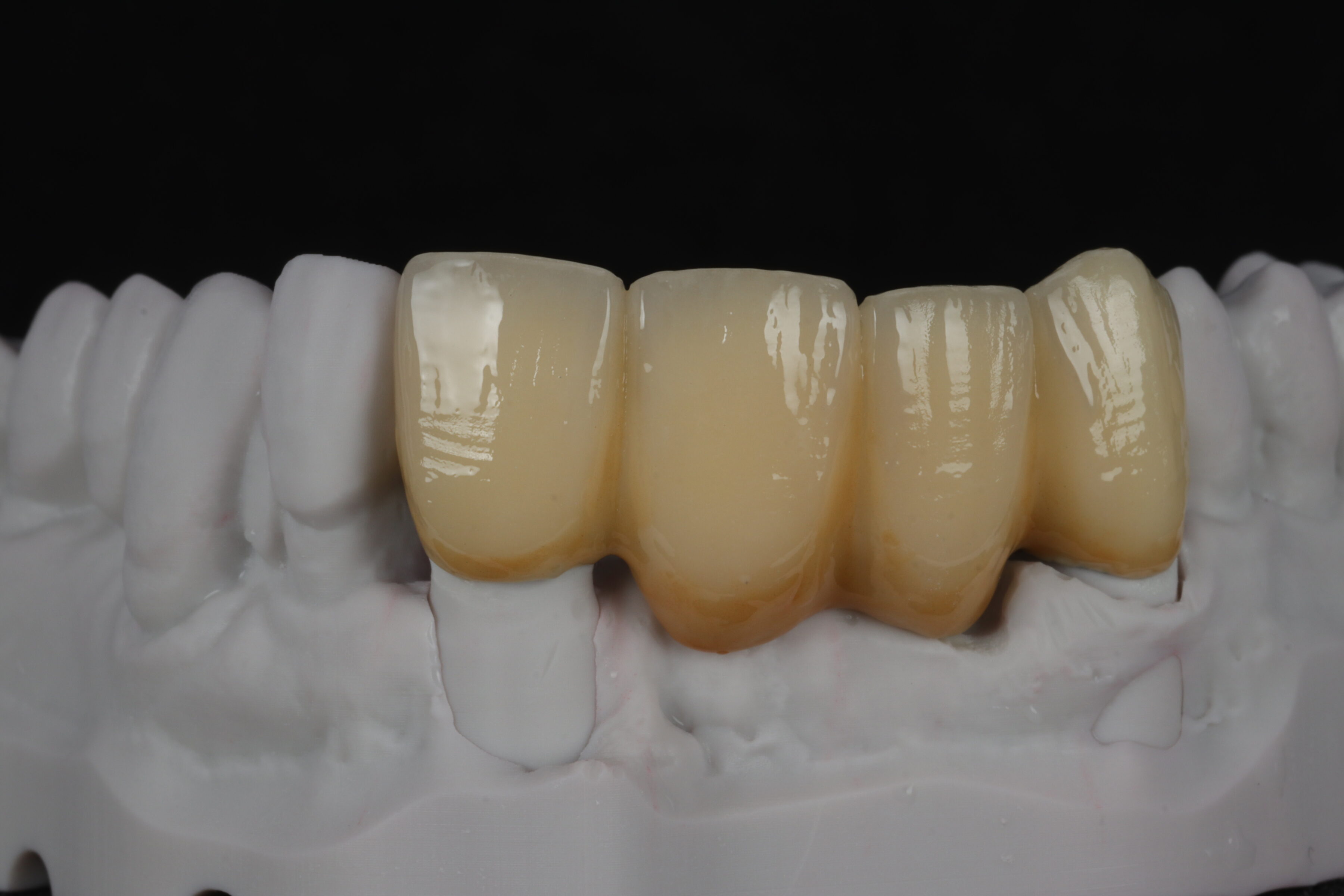
Hybrid ceramic is a great solution for those restorative situations where a full ceramic isn’t suitable.
Our technicians may suggest using these materials at times where there is little space, perhaps in a posterior region, and a gold alloy isn’t an acceptable material for your patient.
A hybrid ceramic still offers high strength and durability, excellent marginal adaptation and looks great.
A hybrid ceramic can be used in crown and bridge work, or utilised in full-arch implant cases where a metal substructure is used for support.
Request Our Dental Laboratory Price List Find out how our pricing can support your cases
Complete our simple request form to receive pricing tailored to your requirements. Our simple approach ensures you have all the information you need to plan cases efficiently, while partnering with a reliable dental laboratory you can trust.
Awards Finalists in the Private Dentistry Awards 2025
We are proud to share that two of our talented dental technicians at GoDigital Dental have been shortlisted as finalists in the Technician Team Member category at the Private Dentistry Awards 2025. This achievement recognises their outstanding skill, dedication, and commitment to excellence in digital dentistry.
Customer Reviews
Dental Crown Lab and Dental Bridge FAQs
What materials do you use for crown and bridge restorations?
We offer a wide range of materials to create your crown and bridge restorations, depending on what suits your needs best. The most popular choices are lithium disilicate and zirconia, as these materials are strong, durable, and look very natural. However, we can usually provide whichever material you prefer, whether that is a more traditional metal-bonded unit or a full contour crown made from another type of ceramic.
In some cases, we also get requests for full gold crowns. Gold is still considered one of the best materials for certain situations because of its strength and long-lasting qualities. Even though dental materials have improved a lot over the past 20 years thanks to advances in digital dentistry, there is still a place for traditional materials and techniques in some cases.
If you are unsure about which material to choose, our team is happy to talk you through all the options. We can explain the benefits of each material and help you make the best decision for your patient’s needs.
How do I choose between glass ceramics and zirconia for my patient’s case?
From our point of view as a dental lab, the main differences between glass ceramics and zirconia are strength, translucency, and the way the tooth needs to be prepared. One key factor to consider is the occlusal space, which is the amount of room between the teeth when the mouth is closed. When this space is tight, we often suggest using zirconia because it is very strong and can be made thinner. We usually recommend a high-strength zirconia with a polished surface in these cases, which provides durability without needing too much space.
For patients where aesthetics are very important and the prepared tooth has no discolouration, we might recommend a Feldspathic ceramic CAM block. This material looks very natural and has excellent translucency, making it a good choice for front teeth. Every crown or bridge case is different, so we always give each digital scan the time and attention it deserves. We communicate closely with dentists throughout the process and are happy to support them to provide the best possible restorations for their patients.
What shade guide does the GoDigital Dental Crown Lab team prefer?
Our ceramic team uses three different shade guides, each for a specific purpose, to ensure the best colour match for every case. The first and most popular is the Vita shade guide. It offers 16 shades and has been a trusted tool for many years. We use this guide to take shades and check all cases before they leave the lab. It is familiar to both dentists and technicians and helps us maintain consistency in colour matching.
For those harder-to-match shades, we use the Vita 3D Master shade guide, which has 26 shades in total. This guide is handy because it allows the ceramic team to choose a shade more accurately. The process starts with assessing the lightness level before deciding on the exact hue and chroma. This helps us get closer to the natural colour of the patient’s teeth, especially in more challenging cases.
Finally, we use bleach shade guides for patients with very white teeth. We offer both the Vita and Ivoclar bleach guides, depending on the dentist’s preference. This variety helps us meet different clinical needs and preferences.
How do you verify the accuracy of impressions or digital scans before fabrication?
Before we start making any restoration, we carefully check the accuracy of the impressions or digital scans we receive. For traditional impressions, we inspect the model for any bubbles, distortions, or missing details that could affect the fit of the final restoration. If there are any issues, we contact the dentist straight away to discuss whether a new impression is needed. This helps prevent delays and ensures the best possible results for the patient.
For digital scans, we review the files closely to make sure all the important areas have been captured clearly. We pay special attention to critical points such as margins and bite registrations. If we find any problems with the scan data, we get in touch with the dental practice promptly to address these before moving forward. This early communication helps reduce errors and saves time during production.
By thoroughly verifying impressions and scans before fabrication, we ensure that the restorations we make will fit accurately and function well. This careful process helps improve patient comfort and satisfaction while making the treatment smoother for both dentists and patients.
Would you recommend a PMMA try-in for crown and bridge cases?
We suggest a PMMA try-in when we believe it will help both the patient and dentist review the case more effectively. This is especially useful in crown and bridge restorations where there are big changes to the occlusal vertical dimension (OVD) or if the restoration will significantly change the patient’s appearance.
The try-in greatly improves communication between the clinician and patient, allowing them to decide together if the case is heading in the right direction. Everyone has their own idea of how the final result should look, and it can be hard to explain this clearly. Photos help, but sometimes they aren’t enough to fully capture the vision. That’s why we send a detailed digital CAD file through Exocad, so you can review the design with your patient virtually before anything is made. This way, any adjustments can be discussed and agreed upon early in the process.
Once you’re both happy with the design, the patient can wear the PMMA try-in briefly. This helps confirm they are comfortable and ready before we make the final ceramic restorations.
Can PMMA prototype try-ins be used as long-term temporaries?
PMMA prototype try-ins are mainly designed to help check the fit, appearance, and function of a restoration before the final piece is made. However, PMMA prototypes are not made to be used as long-term temporary restorations. They are usually worn for a short time to confirm that everything is correct and comfortable before moving on to the final restoration.
While PMMA is a strong material, it is not as durable as materials used for long-term temporaries or final restorations. Wearing a PMMA prototype for too long could lead to wear or damage, which might affect the fit and appearance of the final restoration. It is best to use these try-ins as a short-term guide and not rely on them for extended periods.
If a long-term temporary is needed, dentists should use materials specifically designed for that purpose. PMMA prototypes are a valuable tool in the proces, but work best when used as intended, for brief try-ins to ensure patient satisfaction and proper function before final work begins.
Do you accept all IOSs (intraoral scanners) for crown and bridge cases?
Yes, we accept all types of intraoral scanner (IOS) files. We work with all the main software systems used in dentistry today to receive your IOS data. To make things easier, we can provide you with a detailed PDF that explains how to connect your scanner directly to GoDigital Dental. This helps ensure a smooth and trouble-free transfer of digital impressions.
We fully support a digital workflow for crown and bridge restorations. Digital impressions are faster and more accurate than traditional methods, which makes the entire process easier and quicker for both the dental practice and the patient. Using digital scans means there is less chance of errors, and no messy materials are needed.
Once we receive the digital scans, we use advanced CAD/CAM software to design and manufacture your restorations with great precision. This digital approach helps create restorations that fit perfectly, reducing the need for adjustments and speeding up the whole process. It also improves the quality and consistency of the final results, ensuring better outcomes for your patients.
What turnaround time can I expect for crown and bridge restorations?
We ask that you allow 10 working days for crown and bridge restorations to be completed in our laboratory. Here is an example of how this works: if your scan arrives at GoDigital Dental before 1pm on Monday (Day 1), we will begin working on your case the next day. The case will then be processed over the following eight working days (Days 2 to 9). On Friday (Day 10), the finished restoration will be shipped back to your dental practice using Royal Mail with tracked and signed-for delivery before 1pm.
Please note that if your case arrives after the 1pm deadline, it will automatically be added to the next day’s workflow. This helps us keep an organised schedule and maintain quality in every case.
If you have any cases that need to be returned sooner than the standard 10 working days, please contact the lab directly. We understand that some cases can be urgent, and we will do our best to accommodate your request whenever possible to help you provide timely care for your patients.
Do you provide shade taking services?
Yes, we offer a shade taking service at GoDigital Dental for all our local dental practices and their patients. This service helps ensure that restorations match the patient’s natural tooth colour as closely as possible. For patients living further away who want a more personal experience, we can arrange a one-to-one shade taking appointment at the lab. This gives the patient and dentist peace of mind that the colour match will be accurate.
Our dental crown lab is easy to reach, with great public transport links from Nottingham City Centre, including trams and buses. We are also conveniently located just a 4-minute drive from M1 Junction 26. There is free car parking available on site, making it simple and stress-free for patients visiting us by car.
If you or your patients need directions or more information about the shade taking service, please don’t hesitate to call the lab. Our friendly admin assistant will be happy to help and guide your patients to the right place, ensuring a smooth and pleasant visit.
How do your crown and bridge restorations reduce chairside adjustments?
At our laboratory, we use precise digital technology to design and create crown and bridge restorations. By using CAD/CAM technology, we can produce restorations that are highly accurate and designed to fit perfectly when placed. This accuracy helps reduce the need for adjustments once the restoration is ready, saving time for both the dentist and the patient and improving overall treatment efficiency.
In addition to digital design, we also offer PMMA prototype try-ins. These prototypes allow us to test and refine the fit before making the final restoration. By using a PMMA try-in, any necessary adjustments can be made early in the process, preventing potential issues later on. This means fewer changes need to be done during the final fitting, making the procedure quicker and smoother for the patient.
Combining digital technology with PMMA prototypes ensures a more efficient and comfortable experience. The result is a well-fitting restoration that looks great and functions properly, helping dentists provide the best care for their patients.
SEND A MESSAGE
hello@godigital-dental.com
GoDigital Dental | Dental Lab
6 Millennium Way West
Nottingham
NG8 6AS


